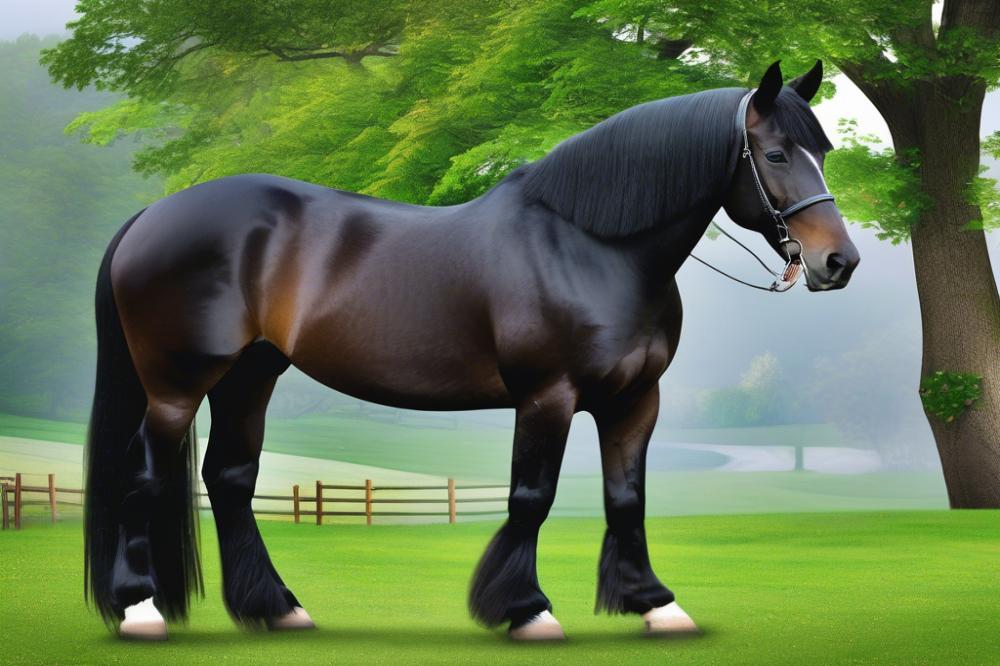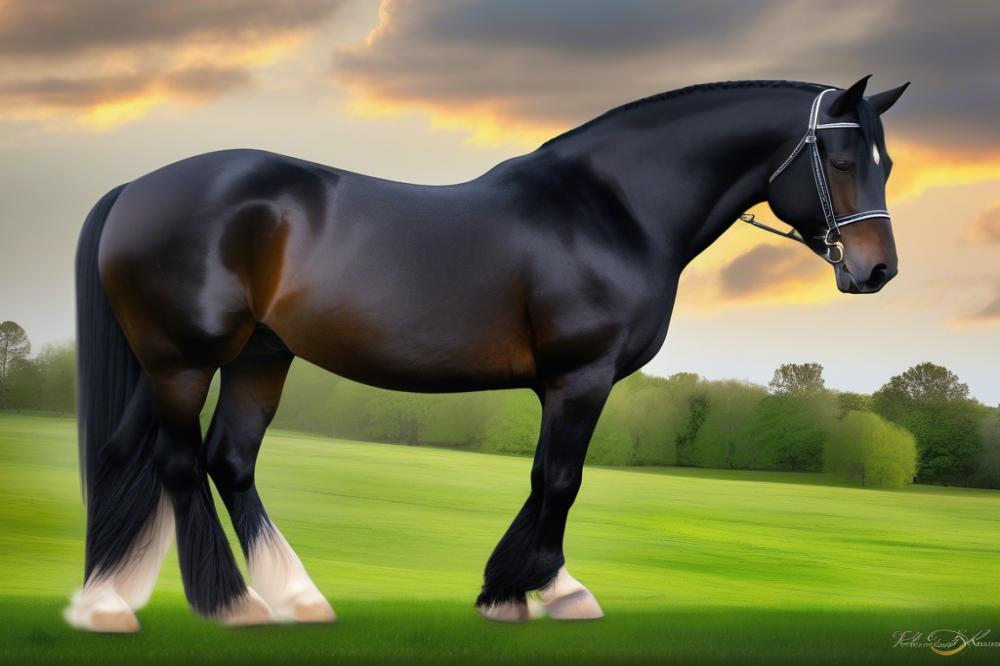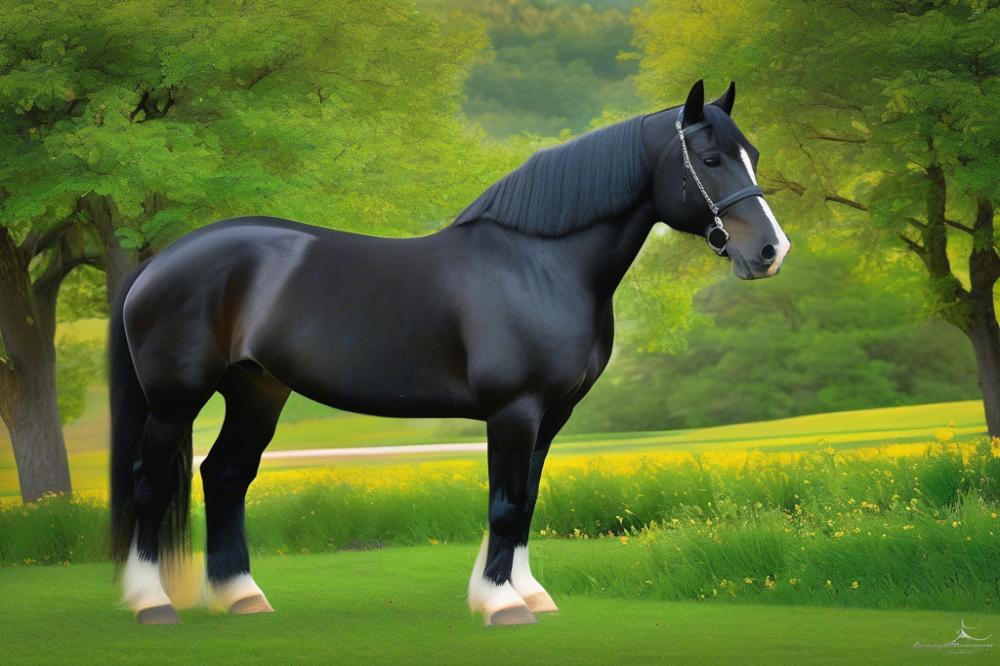How to Train and Ride a Percheron for Work and Recreation
Overview of the Percheron Breed
Percherons are a remarkable breed of horse known for their strength, intelligence, and gentle temperament. Originally from France, these horses were used extensively in agriculture and as war horses during the Middle Ages. Their powerful build allows them to perform heavy work, making them ideal for various applications, from farming to logging. With their short, thick necks and broad chests, Percherons are not only strong but also graceful.
A key characteristic of this breed is its amiable nature. Many people find them to be easy to handle, which makes them excellent companions. Both novice riders and experienced equestrians enjoy working with these horses. They form strong bonds with their handlers, which contributes to an enjoyable training experience.
Importance in Work and Recreational Roles
The Percheron’s robust physique permits them to excel in numerous endeavors. They are often seen pulling carts and plowing fields. This breed is also popular in the equestrian world for recreational riding. riding Percherons gives riders a sense of connection with a horse that is both powerful and reliable. Many people choose to ride them for pleasure and leisure, enjoying adventures on trails and even in arenas.
Farmers and ranchers appreciate these horses for their versatility. Not only do they serve well in a work setting, but they also become a cherished part of the family. These animals help create lasting memories, whether through working side by side or leisurely rides on weekends.
Focus on Effective Training Techniques
Training a Percheron is essential for creating a well-mannered horse. Effective techniques yield benefits for both the horse and the handler. Patience plays a crucial role in this process. Horses respond best to consistent and gentle guidance. Establishing trust is vital. Allowing the horse to understand what is expected will lead to successful training sessions.
Groundwork is an important aspect of Percheron training. Teaching basic commands helps build a strong foundation. Once the groundwork is solid, transitioning to riding becomes smoother. Utilizing positive reinforcement encourages good behavior. Simple rewards like treats or praise can motivate the horse significantly.
In summary, understanding the Percheron breed is the first step to enhancing your experience with these majestic horses. Whether for work or recreation, Percherons offer a loyal partnership that enriches lives. Their training contributes to a harmonious relationship, ultimately leading to enjoyable rides and effective teamwork.
Percheron training

To train a Percheron effectively, it helps to understand their traits. These horses are known for strength and a calm demeanor. Their intelligence makes them good learners, especially when trained properly from the start. Each animal has its own personality, so patience is key.
Understanding the unique traits of Percherons
Percherons tend to be curious and eager to please. Many can become attached to their handlers, forming strong bonds. This can make them more responsive during training. However, their size can be intimidating. Work with them slowly, as building trust is essential before moving on to more challenging tasks.
Basic training methods for draft horses
Start with basic groundwork. This helps establish control and communication. Techniques like leading and lunging are fundamental. They teach the horse how to respond to cues. Use a halter and lead rope for leading practice. Make sure the horse walks beside you without pulling ahead or lagging. This exercise develops respect and patience.
Lunging is a wonderful way to encourage movement. Create a circular path for the horse to follow. Use voice commands and a lunge whip to guide them. Focus on getting the horse to move forward and then stop on command. This builds a solid understanding of your cues.
Foundation skills: leading, lunging, and ground work
Groundwork is vital for the horse’s training journey. This includes teaching the horse to stand still, back up, and turn on command. Practicing these skills on the ground can lead to a more relaxed riding experience later. Always reward good behavior with praise or treats to motivate them.
Incorporating obstacles can add some fun to groundwork. Use poles, cones, or other items to help develop agility and confidence. Watching a Percheron navigate these challenges is rewarding. Progress takes time, so remain consistent and caring throughout each session.
Advanced training for work tasks and recreational riding
Once the foundation is set, move on to advanced training. For work tasks, teach them to pull carts or plows. Start slow, gradually increasing the weight as they become stronger. Positive reinforcement will strengthen their willingness to work.
For recreational riding, ensure the horse is comfortable with a saddle and bridle. Begin with short rides in a safe environment. Focus on walking and lightly trotting at first. As the horse gains confidence, you can explore new trails and terrain.
Encourage a relaxed attitude throughout the entire process. Keeping sessions short and enjoyable helps maintain their interest. Consider varying routes or introducing new challenges to keep things fresh. Both you and your horse will appreciate this approach.
Essential Horse Grooming and Care

Daily Grooming Routines for Percherons
Grooming a Percheron is an important part of their daily care. Brushing removes dirt, mud, and loose hair. Use a curry comb to loosen debris. Follow this with a stiff brush to clear away dirt and a soft brush for sensitive areas. Pay attention to the mane and tail. They often become tangled, so be gentle when working through knots. Regular grooming helps establish a bond between horse and handler.
Cleaning hooves is also vital. Inspect each hoof for stones or debris. Use a hoof pick to remove anything stuck inside. This practice helps prevent infections. Daily grooming fosters a healthy coat and promotes good circulation.
Importance of Horse Care in Training Success
Care plays a significant role in the success of any training program. Healthy horses perform better and learn faster. Good care reduces stress and keeps the horse more comfortable. When a horse feels good physically, they are more willing to engage in activities. Building trust through proper handling enhances the effectiveness of training techniques. Over time, a well-cared-for horse becomes reliable and responsive.
Feeding and Nutrition for Optimal Performance
Nutrition is crucial for the well-being of Percherons. These large animals require a balanced diet. Quality hay should be the main part of their diet. Grains can be added but should be introduced carefully. Supplements may be useful, particularly for joint health and overall vitality. Always consider the specific needs based on the horse’s workload. Fresh water must be available at all times, as hydration impacts performance.
Understanding the nutritional needs helps maintain their energy levels. A horse that receives proper nutrition is less likely to suffer from fatigue or illness. Consider consulting an equine nutritionist for tailored advice.
Health Checks and Veterinary Care
Routine health checks are essential for every Percheron. Examine your horse regularly for signs of illness or injury. A stable environment will reduce the risk of illnesses. Vaccinations should be administered at proper intervals. Keep track of deworming schedules, as parasites can affect any horse’s health. Regular dental check-ups are also necessary to maintain good eating habits.
Investing in veterinary care is wise. A veterinarian can provide guidance and address any health concerns. Being proactive will minimize health issues and promote a longer, healthier life for your horse. Proper care ensures the horse remains fit for work and recreation.
riding techniques for Percherons

Adjusting riding techniques for Heavy draft horses
When riding a Percheron, adjusting your techniques is essential. These horses carry substantial weight and muscle. You need to be aware of their strength. A lighter touch on the reins can help avoid overwhelming them. Move your body with theirs, particularly at slower speeds. Balance is key; it can prevent unnecessary strain on both you and the horse. If you feel heavy in the saddle, they might as well. Maintain a smooth rhythm when trotting or cantering. This creates a more enjoyable experience for both of you.
Saddle Fit and Bridling for Comfort and Control
Saddle fit plays a significant role in riding comfort. The right saddle should not pinch or rub. A well-fitted saddle will help distribute your weight evenly. This consideration minimizes pressure on the horse’s back. Bridles also require a thoughtful approach. Choose a bit that suits your horse’s mouth comfortably. Leather straps should sit snugly but not too tightly. Comfort is vital for effective communication between horse and rider. Ensure your gear promotes ease of movement.
Developing Equestrian Skills Specific to Percherons
Horseback riding demands various skills, particularly with a Percheron. Riders should focus on developing a strong core. A strong core allows better stability in the saddle. Practicing transitions between gaits helps to enhance control. Work on executing those transitions smoothly for a better riding experience. Distance riding often requires pacing strategies. Learn to gauge your horse’s energy and stamina. This will be beneficial during work or leisure rides. Understanding their behavior boosts your ability to manage them effectively.
Strategies for Effective Communication with the Horse
Effective communication between rider and horse is crucial. Using subtle cues can yield positive responses. A gentle squeeze of your legs can signal your Percheron to move forward. Use your voice calmly; it helps in reinforcing your commands. Pay attention to their body language. Ears positioned forward often indicate curiosity or attentiveness. When they twitch their tail, it might signal unease. Establishing a connection fosters trust and cooperation. All these elements contribute to a successful riding partnership.
Driving Horses vs Riding for Recreation
Fundamentals of Driving Horses and Equipment Needed
Driving requires different skills compared to riding. Harnessing a horse is essential to pull vehicles or equipment. The basic components of harnessing include the collar, traces, and a breast strap. A cart or wagon is typically used for hauling goods or for leisurely outings. Choosing the right size and type of harness is important for your Percheron’s comfort. Equipment must fit well to avoid chafing or injury. Learning to properly attach the harness takes practice, patience, and guidance.
Comparing Riding and Driving Techniques for Percherons
Riding a Percheron involves sitting on its back, while driving involves controlling it from a carriage or cart. Different cues are used to communicate with the horse. While riding, the rider has direct contact and can feel the horse’s movements. Using leg pressure and voice commands are common in riding. On the other hand, driving requires more reliance on voice commands and reins. Both techniques require training to build a strong bond with the horse. Observing the horse’s responses improves communication in both settings.
Safety Considerations for Both Activities
Safety is critical whether riding or driving. Always wear appropriate gear. Riders should use helmets to protect against falls. Drivers need to ensure that their harness and cart are secure before driving. Awareness of surroundings helps prevent accidents. Horses can be startled, so keeping calm and steady is vital. It’s wise to know emergency procedures for both activities. Understanding how to read a horse’s body language enhances safety for everyone involved.
Recreational Riding Tips for Leisure and Enjoyment
Enjoyment is key when riding for recreation. Choose safe trails and environments. Start with grooming the horse; it builds trust and comfort. Spend time on basic maneuvers to foster a good bond. Riding at a comfortable pace allows for relaxation and enjoyment. Incorporating variety in routes can keep the experience exciting. Invite friends or family to share the joy of riding together. Most importantly, listen to your horse; it often shows you what it enjoys.
Building a Relationship for Effective Training
Establishing Trust and Connection with Your Percheron
Creating a bond with your Percheron starts with patience and consistency. Spend time grooming and handling your horse. This simple act helps build familiarity. Horses thrive on routine. Keeping a regular schedule for feeding and exercise strengthens this connection. Approach your Percheron calmly. Speak softly and move slowly to avoid startling it. Observing body language is vital. A relaxed horse is more receptive to training.
Using Positive Reinforcement in Training
Positive reinforcement is an effective method. Rewarding desired behaviors encourages them to happen again. Treats, praise, or a gentle pat can reinforce good actions. Be consistent with rewards to prevent confusion. Your Percheron will learn quickly when it connects actions with positive outcomes. If it seems hesitant, don’t rush the training session. Taking breaks can help alleviate stress. Always celebrate small successes. Each step forward strengthens your relationship.
Recognizing and Respecting the Horse’s Abilities and Needs
Every horse has its own strengths and weaknesses. Understanding these qualities helps in tailoring your training approach. Some Percherons may excel in pulling while others inspire through riding. Pay attention to signs of fatigue or discomfort. An overstressed horse will not learn effectively. Offering regular breaks makes training more enjoyable. Providing proper nutrition also supports their well-being. Building a genuine partnership means listening to your horse. Respect its boundaries and wishes. This leads to a more fulfilling experience for both of you.
Final Thoughts on Training and riding Percherons
Training a Percheron opens doors to many rewarding opportunities. These draft horses are known for their strength and gentle nature. Trainers should emphasize patience and consistency throughout the process. A strong bond builds the foundation for effective communication and understanding between horse and rider. Using positive reinforcement can make a big difference as well. It creates a happy learning environment for the horse.
Not only is riding a Percheron enjoyable, but their versatility shines in various activities. Riders can explore trails, engage in horse riding competitions, or participate in farm work. Each activity reveals different aspects of their unique character. There’s something special about working with an animal that is both powerful and calm. Encouragement for trainers should come from recognizing their horse’s progress. Celebrating small achievements fosters confidence for both horse and rider.
Spending time with a Percheron brings immense joy. Whether it’s harnessing them for work or enjoying a leisurely ride, every interaction has its rewards. The gentle disposition of these horses makes them excellent companions. They thrive on attention and care, rewarding trainers with affection in return. Each day spent with a Percheron can deepen the bond and understanding between human and horse. Embrace the journey of training and riding these magnificent animals. It is sure to enhance your life in countless ways.



